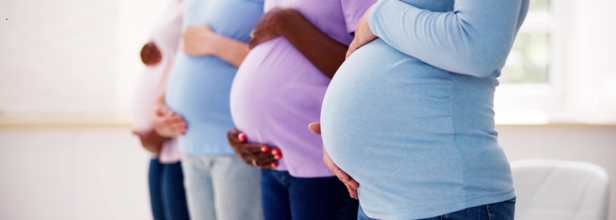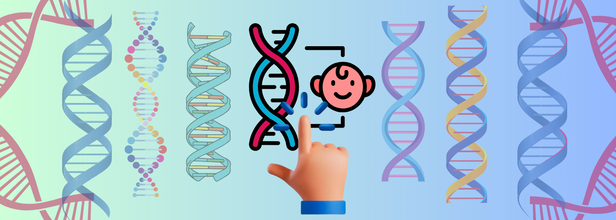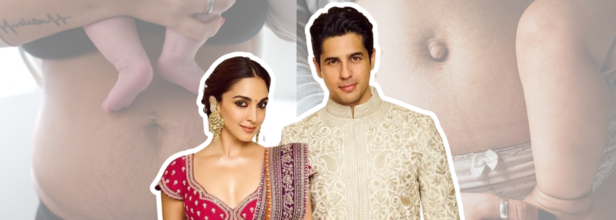- Health Conditions A-Z
- Health & Wellness
- Nutrition
- Fitness
- Health News
- Ayurveda
- Videos
- Medicine A-Z
- Parenting
- Web Stories
Food Insecurity During Pregnancy Can Lead To Complication, Finds Study

As per a new paper published in JAMA Network Open which used data from an online health survey of more than 19,300 pregnant Kaiser Permanente Northern California members between June 2020 and September 2022, it was found that hunger and pregnancy complications went hand in hand. This means while pregnancy those who go hungry or worry about food are at the higher risk of complications, which includes preeclampsia and gestational diabetes.
Preeclampsia: This occurs when the mother has high blood pressure during pregnancy, usually happening after 20 weeks of pregnancy.
Gestational diabetes: It is a condition that causes high blood sugar levels during pregnancy, especially when the body cannot produce enough insulin to meet the extra demands of pregnancy.
However, the researchers did not find the same risks among those who received food and assistance while they were pregnant.
How was the study conducted?
Participants were asked questioned and screened for food insecurity. They were asked if they had ever run out of food or were worried about running out of food due to lack of money during their pregnancy. Of them, 14% of the participants, which makes it around 2,700, said that they had experienced such food insecurity during their pregnancy. While 7.6%, which makes them around 1,470 participants said that they had received the food assistance while pregnancy.
Food assistance during pregnancy helps the mother and her baby to get the nutrition they need. It also helps mother to have a stress-free pregnancy without having to worry about what she must or must not eat. With guided assistance for food, the mother is given the food which is necessary to avoid complication and improve health conditions.
What did the study find?
The study found that food-insecure participants had a higher rate of gestational diabetes, making up to 10.9% of them, versus the 7.9% among those without food insecurity. Of them, 8.1% had the risk of preeclampsia, and other complications, which included preterm birth, neonatal ICU admission and many. The study however clarified that gestational hypertension and caesarean delivery were not associated with food insecurity.
Why Is It A Concern?
Food insecurity is also characterized by insufficient access to nutritious food, which is detrimental during pregnancy. Lack of adequate nutrition can lead to severe health problems for both the mother and the babies.
The researchers note: "Pregnancy is a critical period during which exposure of food insecurity can have magnified detrimental effects on the pregnant individual and their developing fetuses."
There are food assistance programmes built for pregnant women and help them receive the care best suitable for them and their developing babies. Some of the programmes include:
- Supplemental Nutrition Assistance Program (SNAP): A federal program that helps people buy food
- Special Supplemental Nutrition Program for Women, Infants, and Children (WIC): A program that helps pregnant women, infants, and children get nutritious food
- Local food banks: Food banks can help pregnant women get food
Fruits: cantaloupe, honeydew, mangoes, prunes, bananas, oranges, grapefruit
Dairy: fat-free or low-fat yogurt, skim or 1% milk, and soymilk
Vitamin C: citrus fruits, broccoli, tomatoes, strawberries
The Dream Of 'Super Breed Babies' Is Becoming A Reality In Silicon Valley, Babies Are Now Not Just Born, But Selected

Credits: Canva
When Roshan George and Julie Kang were told during IVF testing that they both carried a rare gene linked to early-onset hearing loss in infants, they didn’t hesitate to dig deeper. Like many in San Francisco’s tech scene, they turned to data. It was not just any data, but a full genomic analysis of their embryos from a start-up called Orchid.
It cost them $30,000 to screen 12 embryos. Six were viable. They sorted through risk scores for everything from bipolar disorder to type 2 diabetes, eventually selecting the embryo with the best odds. Their daughter, Astra, was born this March. She was healthy and was born with perfect hearing.
What this couple did might sound like a glimpse into the distant future. But in Silicon Valley and beyond, it’s already happening.
Silicon Valley’s Fertility Revolution
Orchid, a fertility start-up based in San Francisco, reports the Washington Post, is spearheading a radical new chapter in human reproduction. Founded by Noor Siddiqui, the company offers whole-genome sequencing of embryos created through IVF, allowing parents to screen for over 1,200 single-gene disorders, and to assess the embryo’s genetic risk for more complex diseases like cancer, schizophrenia, and Alzheimer’s.
In Siddiqui’s words, the goal is to help build “a generation that gets to be genetically blessed and avoid disease.”
At $2,500 per embryo, in addition to the roughly $20,000 average cost of one IVF cycle, the service is far from accessible to everyone. But in data-driven tech hubs like San Francisco and Austin, it’s catching on fast.
Sex Is For Fun. Embryo Screening Is For Babies
“Sex is for Fun. Embryo Screening is for Babies.”
That’s how Siddiqui sums up the shifting mindset. She imagines a future where sex is decoupled from reproduction, and where couples routinely pick their children using spreadsheets and algorithms. Sounds too robotic? But it really isn't even a distant future, it is slowly becoming reality.
At a private dinner party in Austin last spring, Siddiqui pitched her vision to a group of women sipping mocktails and wearing pastel baseball caps with one word: BABIES.
One of the attendees, reports the Washington Post, Shivon Zilis, who is a tech executive and mother to several of Elon Musk’s children, is reportedly an Orchid client. Sources say at least one of her children with Musk is an Orchid baby.
Siddiqui, now 30, plans to have four children herself using embryos screened by her own company.
The Promise of Prediction
So how does it work? Orchid uses five cells from an early-stage embryo to sequence the full human genome, a feat many geneticists previously believed impossible. It then uses machine-learning models to produce polygenic risk scores, predicting an embryo’s likelihood of developing certain diseases.
Backed by high-profile investors like Coinbase CEO Brian Armstrong and Ethereum co-founder Vitalik Buterin, Orchid is now in over 100 IVF clinics in the U.S.
The tech is built for a specific demographic: affluent, tech-savvy, data-worshipping individuals willing to invest in what one investor called a “genetic trust fund” for their future kids.
A Trust Fund of Traits Or Modern Eugenics?
The term eugenics makes many recoil. Siddiqui distances herself and her company from the idea, and insists the goal is about health, not perfection. But critics are wary.
When you screen for risk factors like schizophrenia, are you also unintentionally screening out traits tied to creativity? Could polygenic scores become a gateway to selecting for intelligence, height, or athleticism? And is this a privilege only the rich can afford?
Some scientists argue and the Washington Post reports, that these tools give an illusion of control. “It’s easy to moralize from an ivory tower when your child isn’t the one who might be born with a fatal disease,” said Orchid spokeswoman Tara Harandi-Zadeh.
Still, others worry about the science itself.
The Fault in the Genes?
One of Orchid’s biggest scientific claims is that it can sequence an entire genome from just five embryonic cells. This is hotly contested. Svetlana Yatsenko, a clinical genetics expert at Stanford, called it “basically Russian roulette,” citing errors introduced in the DNA amplification process.
Others are skeptical of the reliability of polygenic risk scoring, especially for traits like intelligence where predictive accuracy is extremely low, just a few IQ points at best. These risk scores also struggle with accuracy in non-European populations because the databases they draw from are largely Eurocentric.
Siddiqui acknowledges the challenge. Her husband is Middle Eastern, and she herself is South Asian. She says Orchid adjusts for population bias and, in some cases, doesn't offer scores at all.
No Rules, All Risks?
What’s striking is the lack of regulation. In the U.S., there are no real restrictions on what kinds of predictions companies like Orchid can sell. Their algorithms are proprietary and not vetted externally.
Despite the American College of Medical Genetics and Genomics advising against embryo screening for polygenic risks and calling the benefits “unproven”, companies are surging ahead. A newer Thiel-funded start-up, Nucleus, claims it can screen embryos for more than 900 traits and conditions.
As Peter Kraft, a Harvard expert on polygenic scores, put it: “The science doesn’t add up.”
Still, Parents Want Information
Despite the skepticism, demand is rising, notes the Washington Post. Many parents, especially those facing infertility or rare genetic conditions, are desperate for clarity. The George-Kang family didn’t expect certainty. They just wanted more information, more peace of mind.
“I think everyone who wants to have a baby should be able to have one,” Siddiqui told The Washington Post. “And they should be able to have a healthy baby.”
Critics might call it premature, or even dystopian. But to Siddiqui, it’s personal. Her mother lost her sight to a rare genetic disease. To her, it’s not just about tech, it’s about giving families a fighting chance.
The Future of Fertility
Whether Orchid’s vision becomes mainstream or remains an elite niche remains to be seen. But the door has opened to a future where reproduction is shaped not by nature, but by code, choice, and capital.
The baby of tomorrow may not be conceived in passion, but in planning and through lab reports, data sets, and algorithmic scores.
And in Silicon Valley, that future is already being born.
Kiara Advani And Sidharth Malhotra Welcome Their First Baby: This Is What Lies Ahead Of New Parenthood

Kiara Advani and Sidharth Malhotra have become parents. They are blessed with their first child, a baby girl on July 15. Both the actors shared a joint statement, "Our hearts are full, and our world forever changed. We are blessed with a baby girl. Kiara & Sidharth."

As the couple welcomes their baby and get used to the new life, a lot more is to come for both. While parenthood is a blessing, it is also challenging. Welcoming a baby also means a period of postpartum for the mother. So, how does it all work out? How can mothers smoothly sway through this phase?
What Happens In Postpartum Phase?
Postpartum brings a cascade of physical, emotional, and hormonal changes that deeply affect new mothers. “There are uterine changes, which means the uterus expands during the pregnancy and begins to shrink back to its pre-pregnancy size after childbirth. This may cause cramping,” explains Dr Sushma Pampanavar, gynecologist and obstetrician.
She adds, “Hormonal shifts, especially estrogen and progesterone drop rapidly after delivery, this can affect the mood.” Dr Pampanavar also points out that postpartum symptoms include “postpartum bleeding and discharge, also known as lochia, which goes on for a few weeks.”
Other physical changes involve engorged breasts, nipple sensitivity, and pelvic floor discomfort which can lead to urinary incontinence. “Your body goes through so many changes all at once,” she says, highlighting the layered transition women undergo physically and emotionally.
Dr Himanshu Nirvan, psychiatrist, elaborates on the emotional toll, stating that “persistent feelings of sadness, hopelessness and irritability in mothers can lead to difficult bonding with the baby and thoughts of harming oneself or the baby.”
He warns that if left unaddressed, postpartum can “potentially strain the mother-child relationship, leading to feelings of detachment, neglect or irritability.” To support healing, he recommends, “Joining new parent groups, seeking online forums, attending support groups, and connecting with other mothers.”
Speaking about postpartum after pregnancy loss, Dr Avir Sarkar, gynecologist and assistant professor, says, “Experiencing a pregnancy loss, whether through surgical abortion or delivering a stillborn baby due to miscarriage, can indeed lead to a complex and emotional postpartum experience for women.”
He adds, “Women still experience bleeding, hormonal shifts and other postpartum symptoms, along with the profound emotional impact of pregnancy loss,” and suggests, “Allow yourself to grieve, express your emotions and seek support from loved ones and healthcare providers.”
What Can Help You Heal?
In a world that glorifies productivity, “doing nothing” as a new mother sounds almost rebellious. Yet, for many postpartum women, embracing rest over relentless activity might be the most healing thing they can do. After childbirth, while the spotlight shines on the baby, the mother is often left to quietly cope with bleeding, sleep deprivation, hormonal shifts, and emotional upheaval—all while being told to “bounce back.”
Cultural images of polished, picture-perfect new moms—like public figures stepping out in heels and makeup just hours after delivery—set dangerously unrealistic standards. But the truth is, the body takes time to heal. The uterus alone takes around six weeks to return to its pre-pregnancy size, and emotional recovery can take even longer. That’s why the idea of “doing nothing” in postpartum isn’t about laziness; it’s about reclaiming space to rest, bond, and recover.
Doing nothing may look like holding your baby while binge-watching TV, letting go of expectations around housework, or allowing cereal to be dinner more nights than not. It might involve skipping extra chores, saying no to guests, and prioritizing sleep whenever possible.
For multitasking moms especially, embracing this mindset can be tough. But those who slow down often find clarity and peace. As the article notes, pushing yourself too soon can lead to physical complications and emotional burnout, while accepting a slower pace can help you emerge stronger and more present.
Is It Safe To Let Teens Drive? Study Finds Teens Spend A Fifth Of Their Time Driving, On The Phone

(Credit-Canva)
Learning how to drive is a big step of independence for children. It marks a phase where they learn responsibility, how to manage the autonomy they have gained as well as their way around different situations. There are many dangers associated with driving, hence there is a level of trust a parent must have before they let their teens drive. Whether it is others driving recklessly, difficult roads to travel in or themselves being careless. As teens are very well known for their lack of well-thought out actions, many of them find using their phones while driving normal.
A new study reveals a concerning trend: about one-fifth of the time, teenage drivers are looking at their smartphones instead of the road. This means they're not paying attention to what's in front of them or checking their mirrors.
The study, published in the journal Traffic Injury Prevention, found that teen drivers spend an average of 21% of each trip focused on their phone. What's more, these weren't just quick peeks. Nearly 27% of the time, drivers were looking at their phones for two seconds or longer. This amount of time dramatically increases the chance of a car crash.
Why Teens Use Their Phones Behind the Wheel
So, what are teens doing on their phones while driving? The study showed:
- Entertainment (like social media or videos) was the top reason, accounting for 65% of phone use.
- Texting came in second at 40%.
- About 30% of teens used their phone's GPS for navigation.
The Dangers of Distracted Driving
Distracted driving is a serious threat to public safety, especially among young drivers. When someone drives while distracted, they're not just putting themselves at risk of injury or death; they're endangering everyone else on the road.
While 35 U.S. states have laws banning all phone use for young drivers, a previous national study found that nearly 92% of teens still regularly use their smartphones for texting, talking, or playing music while driving.
What Teens Understand (and What They Don't)
For this new study, researchers asked over 1,100 teenagers about their habits and beliefs regarding smartphone use while driving.
Many young drivers actually understand that bad things can happen when they're distracted. They also know that their parents and friends wouldn't want them using their phones while driving. Teens also strongly believe they can avoid distracted driving by using features like "Do Not Disturb," hands-free modes, or phone holders. They recognize the benefits of using phone features like GPS but also understand the higher risk of accidents when distracted.
However, teens also said that their friends often drive while distracted by their phones. This suggests that more teens might be giving in to the temptation than they're willing to admit.
How to Encourage Safer Driving
Researchers suggest creating messages that challenge false beliefs about using phones while driving, such as the idea that you can still be productive on your phone while in transit. To help reduce this dangerous behavior, they recommend:
- Encouraging the use of "Do Not Disturb" mode on phones.
- Keeping phones out of reach while driving.
- Making sure teens get enough sleep, as tiredness can also increase distraction.
© 2024 Bennett, Coleman & Company Limited

